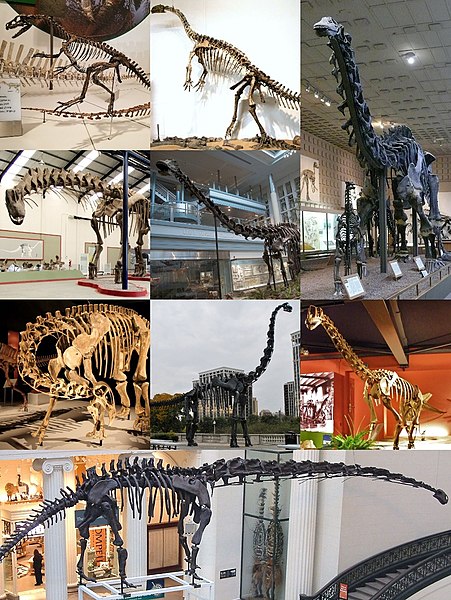Massospondylus was a genus of sauropodomorph dinosaur from the Early Jurassic. It was described by Sir Richard Owen in 1854 from remains discovered in South Africa, and is thus one of the first dinosaurs to have been named. Fossils have since been found at other locations in South Africa, Lesotho, and Zimbabwe. Material from Arizona's Kayenta Formation, India, and Argentina has been assigned to the genus at various times, but the Arizonan and Argentinian material are now assigned to other genera.
Massospondylus
Skull of the neotype specimen (BP/1/4934) of M. carinatus
Fossils identified by Broom in 1911 as Gryponyx, M. carinatus, M. harriesi, and Aetonyx, all now thought to be M. carinatus
Life restoration of a bipedal adult M. carinatus
Sauropodomorpha is an extinct clade of long-necked, herbivorous, saurischian dinosaurs that includes the sauropods and their ancestral relatives. Sauropods generally grew to very large sizes, had long necks and tails, were quadrupedal, and became the largest animals to ever walk the Earth. The prosauropods, which preceded the sauropods, were smaller and were often able to walk on two legs. The sauropodomorphs were the dominant terrestrial herbivores throughout much of the Mesozoic Era, from their origins in the Late Triassic until their decline and extinction at the end of the Cretaceous.
Sauropodomorpha
Skull of Nigersaurus taqueti and head posture in sauropodomorphs
Restoration of Panphagia, one of the most basal sauropodomorphs known.
Plateosaurus is a well-known prosauropod.








